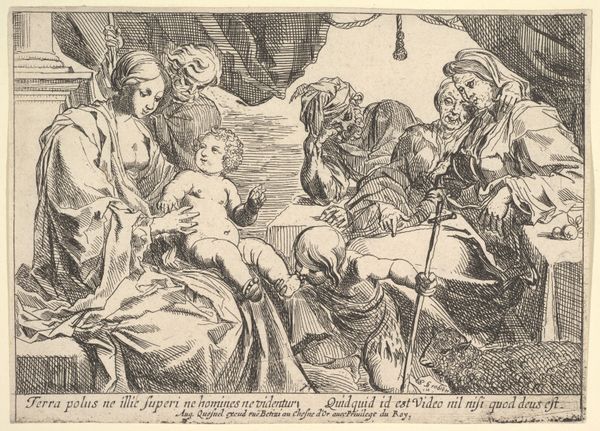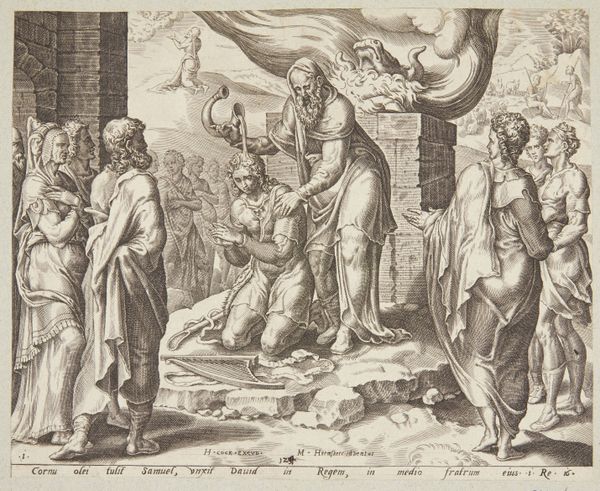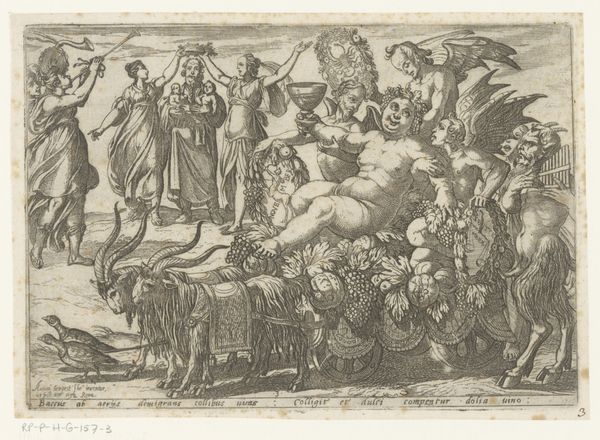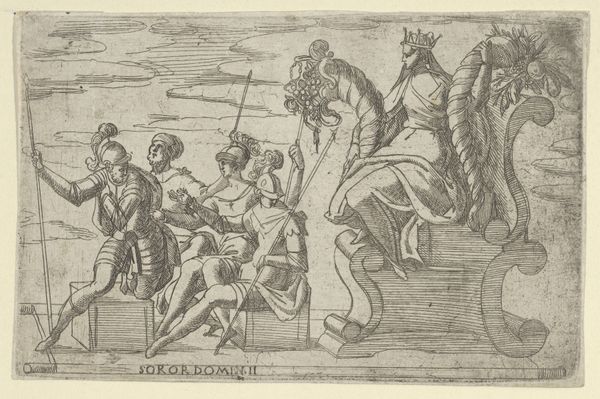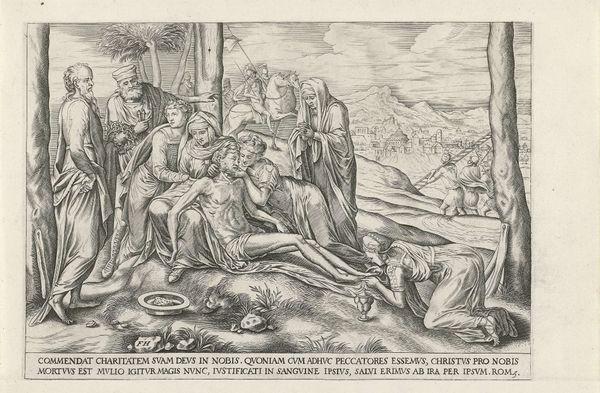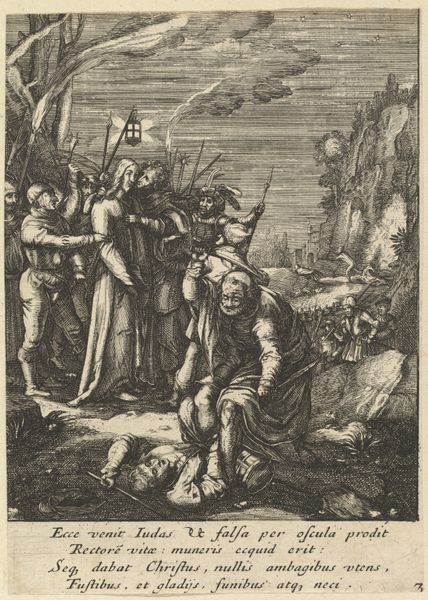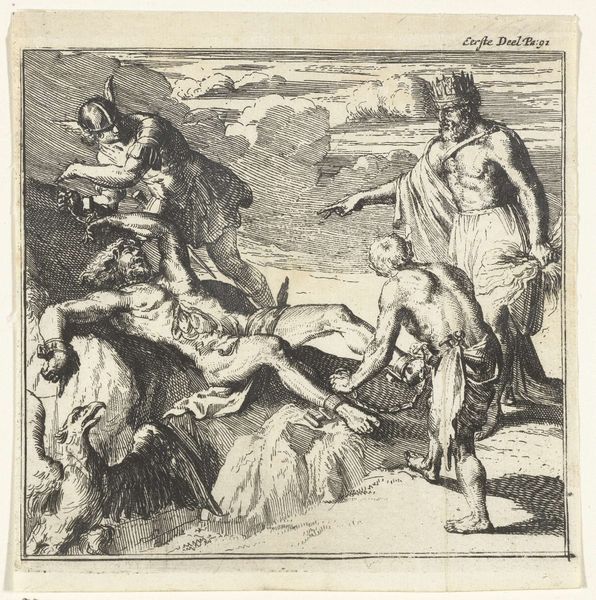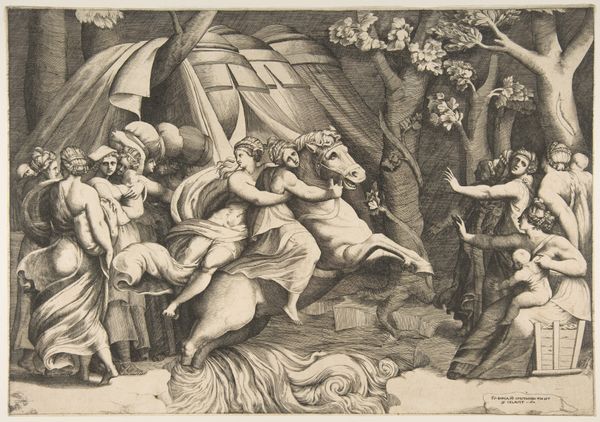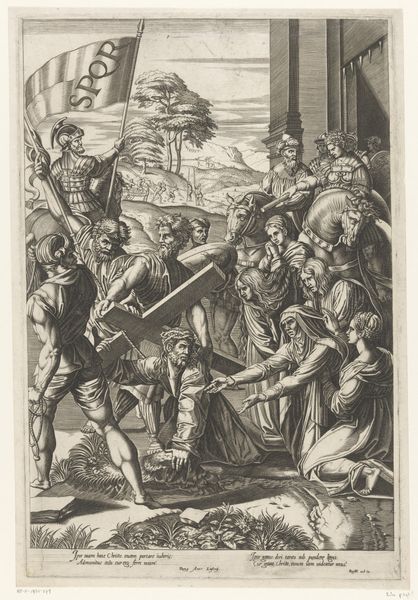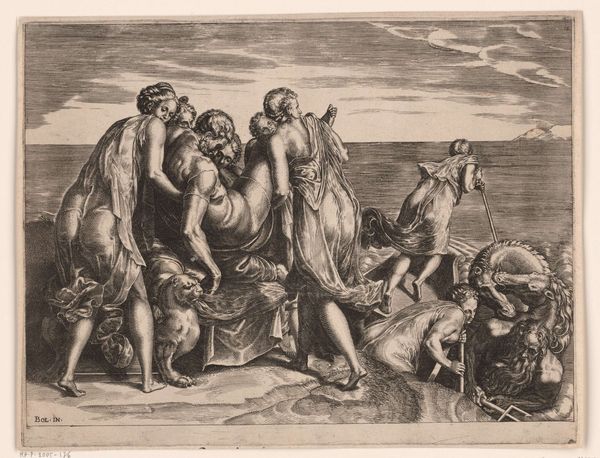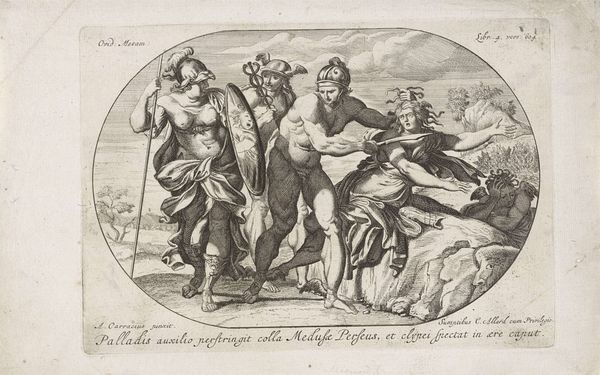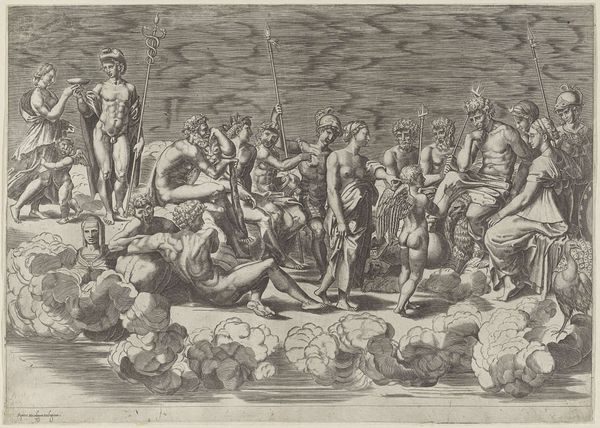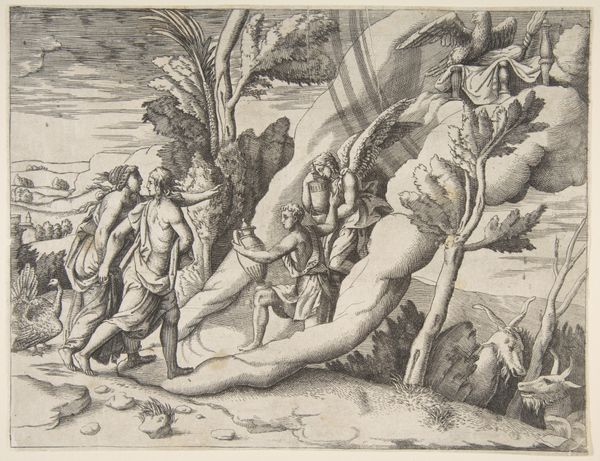
Mars Driven Away from Peace and Abundance by Minerva 1589
drawing, print, paper, engraving
drawing
allegory
mannerism
figuration
paper
11_renaissance
history-painting
engraving
Dimensions: 192 × 254 mm (image); 195 × 256 mm (sheet, trimmed along platemark)
Copyright: Public Domain
Curator: Agostino Carracci created this engraving titled "Mars Driven Away from Peace and Abundance by Minerva" in 1589. The print, rendered in black ink on paper, is currently part of the collection at The Art Institute of Chicago. What is your initial response to it? Editor: I'm struck by the clear binary, this allegory where we see armored figures aggressively pushed aside. They’re departing from this idyllic scene of fruit and flowing robes, yet something about the composition feels, ironically, quite stagnant. Curator: That stillness might arise from Carracci’s precise use of line and cross-hatching. Look at the detailed rendering of the armor versus the more open, flowing lines used to depict Peace and Abundance. Notice also how the composition focuses primarily on the human figures and relatively avoids rendering spatial depth. Editor: This visual emphasis is key. The exaggerated musculature of Mars, coupled with Minerva’s intervention, speaks to a very specific cultural moment. The imagery becomes this clear propaganda tool, championing humanist ideals during a period of religious conflict in Europe. It almost feels… theatrical, doesn't it? Curator: In a way, Mannerism often embraced a certain level of artifice and theatricality. The figures aren't merely characters, but symbols acting out a philosophical drama. We see the use of gesture, particularly Minerva’s hand, functioning to create not just visual, but narrative tension as well. Editor: True, Carracci utilizes familiar symbols – the cornucopia overflowing with fruits of the earth—to construct meaning within a specific sociopolitical and economic frame. How might contemporary audiences have reacted to seeing a god of war forcefully banished in favor of commerce and tranquility? Curator: We have to remember Carracci was operating in a world where images were powerful agents. Consider also the significance of prints and engravings at this moment; their ability to disseminate ideology rapidly. Each carefully placed line, each contrasting texture, works towards the singular objective: persuasive rhetoric. Editor: Considering it's an engraving, there’s a lot of visual information and it rewards a closer, critical read. It gives us a better understanding about art and politics during the Renaissance, that's for sure. Curator: Agreed. There's a definite potency embedded in the choices here regarding not only style and visual vocabulary, but in the very mechanics of its production and distribution.
Comments
No comments
Be the first to comment and join the conversation on the ultimate creative platform.
